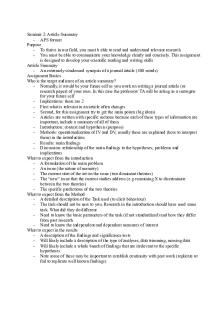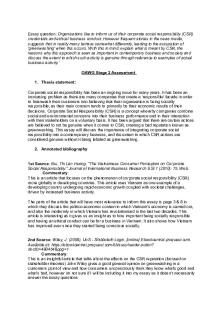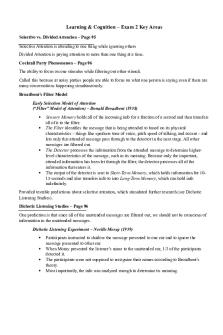FSM2020 - Lecture notes 2 PDF

| Title | FSM2020 - Lecture notes 2 |
|---|---|
| Author | Anonymous User |
| Course | Business Administration |
| Institution | Pondicherry University |
| Pages | 3 |
| File Size | 65.2 KB |
| File Type | |
| Total Downloads | 47 |
| Total Views | 138 |
Summary
Materials...
Description
MBA DEGREE EXAMINATIONS, SEP 2020 FINANCIAL SERVICES MANAGEMENT Time: 3 hours
Maximum: 60 marks PART – A (5X3=15 Marks) Answer any SIX questions
1. Define financial services and financial engineering. 2. What are the causes of financial innovation? 3. Briefly explain a) Leverage buyout b) Management buyout 4. What are the features of Hire Purchase Agreement? 5. Differentiate between credit card and debit card PART – B (5X7=35 Marks) Answer ALL questions 6. Explain the scope of financial services including traditional and moden activities. (Or) 7. Explain the various new financial products/services available in India. 8. Explain the various services rendered by merchant bankers. (Or) 9. What is merger? Explain the various motives of merger. Explain the process involved in financial evaluation of a merger deal. 10. Explain the advantages and disadvantages of leasing. (Or) 11. Explain different types of factoring. What are the benefits of factoring. 12. Explain the various classifications of mutual fund schemes. Or) 13. What are the methods of financing venture capital? Explain the importance of venture capital. 14. Define Insurance. Explain the various types of insurance policies. (Or) 15. Discuss recent trends in marketing of financial services.
1
PART – C (1X10=10 Marks) Compulsory 16. Read the following and answer the questions: TECHNOLOGICAL CHANGE Technology has always shaped society and commerce in unpredictable ways, changing customer behaviour, spawning new enterprises and wiping out existing businesses that are unable to keep pace. As the speed of technological development accelerates, the risk of falling behind becomes more acute. In the digital world, the internet, mobile phones, data analytics and cloud computing are well established. Yet, many companies across all sectors are still grappling with how these developments will affect consumer expectations, the way they interact with their customers and the underlying business models. The development of digital financial services offers a valuable opportunity to engage more closely with younger and more affluent consumers. It is also necessary to expand the availability of services in rural areas without the need for expensive and slow –todevelop branch and agency networks. Successful models in other countries include Kenya’s M-Pesa, which now has 15 million customers, more than all of the country’s banks put together. A research survey found that across all segments of the population, irrespective of the level of savings, there exists a significant demand for branchless banking. In India, technology has helped to stimulate the financial services sector, by overcoming physical and geographical barriers. Technology has helped automate processes, facilitated branchless banking, enabled product innovation and helped allow real-time service delivery across the financial services sector. The mobile revolution has played a huge role in taking banking to India’s un-banked population and it continues to be the one of the most critical pillars supporting the overall structure of the financial services sector in India. Mobile technology is low cost, affordable and easily available and can help financial service providers penetrate markets and increase their customer base. It also provides customers the option to pay for products in multiple ways. Digital development will also make it easier for telecommunication companies and other new entrants to break into the market by leveraging their existing platforms at relatively lesser cost, highlighting the importance of looking beyond existing peers to identify the biggest potential threats to the business in the coming years It is interesting to note that even though India is an emerging technology hub, the country’s IT spend as compared to other countries is quite low. Young urban consumers are already a key part of the aspirational emerging middle. The challenge will be how to engage with a digitally-enabled consumer segment that is creating new rules for choice, interaction and demand. In a society polarised between tech-savvy consumers and people with little or no familiarity with technology, the other main challenge is how to develop the access and vocational training needed to extend these openings to all.
2
The rapid emergence of social media in parallel with the rise of mobility has seen customers increasingly turn to their peers for information and advice, rather than to financial experts. As more financial services customers become ‘self-directed’, they are coming to rely less upon traditional sources of financial advice. Business heads will need to work out how best to engage with and sell to the emerging middle and wider millennial generation in both rural and urban markets. This entails developing the digital distribution and social media presence to reach this highly networked segment. But the demands go further as businesses will need to find ways to tap into the mindspace of a segment that has little loyalty to traditional brands and looks to its virtual peers to provide key product assessment and recommendations. Financial service institutions also need to develop innovative business models to tap into the ‘ecosystems’ of these customer segments and make maximum use of technology to gauge demand, communicate and distribute. In a digital world, it will be harder for financial services businesses to differentiate themselves, as competition intensifies. The ease of switching afforded by digital technology could also drive down margins and profits. Some organisations could be strained to breaking point. In such a competitive scenario, it is necessary for business leaders to develop a vision and strategy to understand how digital transformation will impact customer demands. New operating models and means of interaction will be required to be successful in this changing business context. In most cases, it will prove more effective to work successfully with innovators from technology, telecommunications and other nontraditional banking providers, than to go at it alone. Identifying partners to acquire or help deliver the vision will be of critical importance. Questions: 1) What strategies do you suggest for increasing reach and scalability of financial services businesses beyond Tier 1 and Tier 2 cities, with the use of technology? 2) How would you create efficiency in operations and extend an enhanced customer experience? 3) How the social media platform can be judiciously used to discover new opportunities? 4) Suggest ways to create a resilient risk management framework with the support of technology. ____________________
3...
Similar Free PDFs

FSM2020 - Lecture notes 2
- 3 Pages

Lecture notes, lecture 2
- 3 Pages

2 - Lecture notes 2
- 5 Pages

Lecture notes, lecture Chapter 2
- 11 Pages

Lecture notes, lecture formula 2
- 1 Pages

2 Biodiversity - Lecture notes 2
- 33 Pages

Chapter 2 - Lecture notes 2
- 30 Pages

Blaw 2 - Lecture notes 2
- 4 Pages

Chapter 2 - Lecture notes 2
- 4 Pages

Seminar 2 - Lecture notes 2
- 2 Pages

Stage 2 - Lecture notes 2
- 3 Pages

Exam 2 - Lecture notes 2
- 5 Pages
Popular Institutions
- Tinajero National High School - Annex
- Politeknik Caltex Riau
- Yokohama City University
- SGT University
- University of Al-Qadisiyah
- Divine Word College of Vigan
- Techniek College Rotterdam
- Universidade de Santiago
- Universiti Teknologi MARA Cawangan Johor Kampus Pasir Gudang
- Poltekkes Kemenkes Yogyakarta
- Baguio City National High School
- Colegio san marcos
- preparatoria uno
- Centro de Bachillerato Tecnológico Industrial y de Servicios No. 107
- Dalian Maritime University
- Quang Trung Secondary School
- Colegio Tecnológico en Informática
- Corporación Regional de Educación Superior
- Grupo CEDVA
- Dar Al Uloom University
- Centro de Estudios Preuniversitarios de la Universidad Nacional de Ingeniería
- 上智大学
- Aakash International School, Nuna Majara
- San Felipe Neri Catholic School
- Kang Chiao International School - New Taipei City
- Misamis Occidental National High School
- Institución Educativa Escuela Normal Juan Ladrilleros
- Kolehiyo ng Pantukan
- Batanes State College
- Instituto Continental
- Sekolah Menengah Kejuruan Kesehatan Kaltara (Tarakan)
- Colegio de La Inmaculada Concepcion - Cebu



